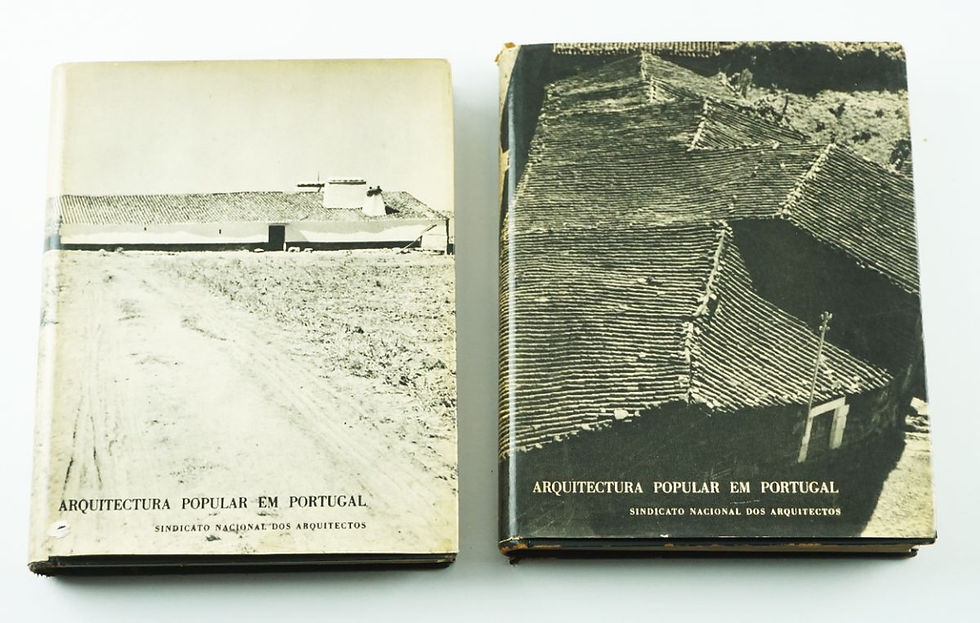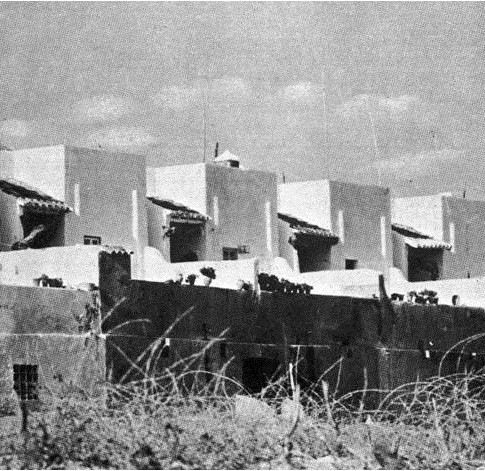“Popular Architecture” & “Modernism” in Portugal
- willkohlen
- 10 dec 2023
- 3 minuten om te lezen
From January 31 to May 15, 2020, there was a very nice photo exhibition about “Popular Architecture” in the municipal museum of Olhão. on display under the title “Algarve Sortido Rico” (The rich range of the Algarve). The exhibition of photographic work by photographer Filipe da Palme consists of a number of collage-like panels with colorful photos that would not look out of place among the postcards with traditional images from the Algarve in the local tourist shops. All typical parts of buildings, such as the colorful and beautifully decorated platibandas (raised decorated facades), chimneys, stairs and natural stone walls are featured. The panels feature Portuguese texts about landscapes, buildings and cities from books or writings, including even a text by Karl Marx.
What about “Popular Architecture” and its counterpart “Modernism” in Portugal and the Algarve? For thef popular architecture, the architect Raul Lino, who was trained in Germany, was particularly influential with his books and publications about “A Casa Portuguesa” (the Portuguese house). This traditional architect and opponent of modernism set the tone for what Portuguese architecture should look like for a long time. It is therefore not surprising that Raul Lino enjoyed a preferential position within the dictatorial regime of Dr. Salazar. Many official state buildings and schools bear Raul Lino's signature.
However, there were also other views in the Portuguese architectural world. In Porto, which has always been more progressive than Lisbon, for example, the modernism of “The Bauhaus” and Le Corbusier was promoted in the architectural training by the architect Carlos Ramos and by his students, including Keil do Amaral and Fernando Távora.
Keil do Amaral - a modernist in search of a third way between traditionalism and modernism - persuaded the architects association and the Ministry of Public Works, after an article in the magazine “Arquitectura”, to initiate a major national investigation between 1955 and 1960. into regional architecture. In response to this, Fernando Távora once said about modernism and traditional architecture that modernism is above all functional and sober, which is also characteristic of traditional Portuguese architecture.
For the research into regional architecture in the Algarve - district 6 - it is interesting that this research took place just before the big tourist boom that followed. This means that the striking details of building in the Algarve have all been included. The research included components such as geography, typology, climate, economy, types of settlements, materials, construction processes, etc.
The relationship between the cubist building tradition, with white houses and flat roofs in Olhão and Fuseta in the Algarve and North Africa, is extensively substantiated by the researchers with texts from Raul Brando's books about Olhão and the fishing community. The research ends with a summary of valuable elements from architecture in the Algarve, such as the platibandas, chimneys, the organization of the inner patio, the applications of the lime material, the vaults in churches, chapels and houses and the window frames with the typical sun blinds. Elements that are still “image-defining” in tourist villages and towns in the Algarve and are richly featured in the exhibition in the museum of Olhão.

The regional architectural research from 1961, published in two large books, did not only change the architectural debate but also the architectural practice in Portugal. The spontaneous architecture and the use of natural and traditional materials and the associated details were particularly impressive and meant more attention to traditional building materials, small scale, cultural elements and integration into the landscape. One of the researchers put it as follows: "We went looking for Le Corbusier's 5 points, which stood for modernity, but ended up with Frank Lloyd Wright and Alvar Aalto".
The report by Fernando Távora, who was involved in the preparations of the presentation for President Salazar, provides a good insight into the relationship between popular and modernism in Portugal at that time. During the presentation of the major research, which was shown before a number of ministers, a slide was shown of a continuous row of white houses with powerful chimneys from the Alentejo. “How beautiful, it looks like modern architecture,” said one of the ministers. To which Távora said: “Indeed, Minister, the research shows the great similarities between popular and modern architecture.” The minister then said: “Mr. Architect, you can think so, but please don't tell that Dr. Salazar tomorrow.”



















































Opmerkingen